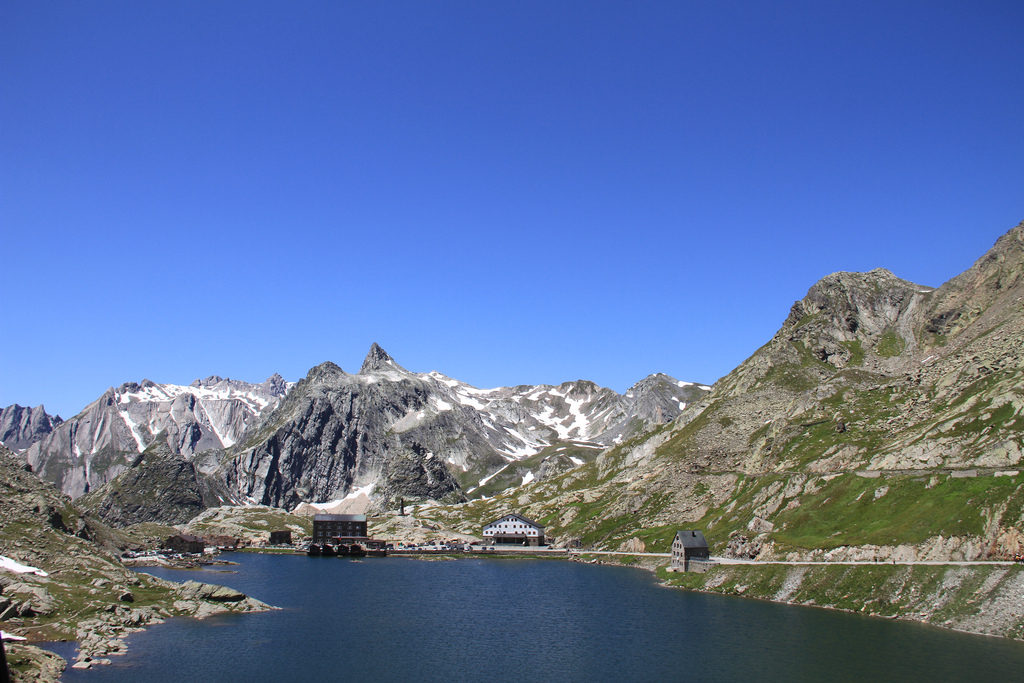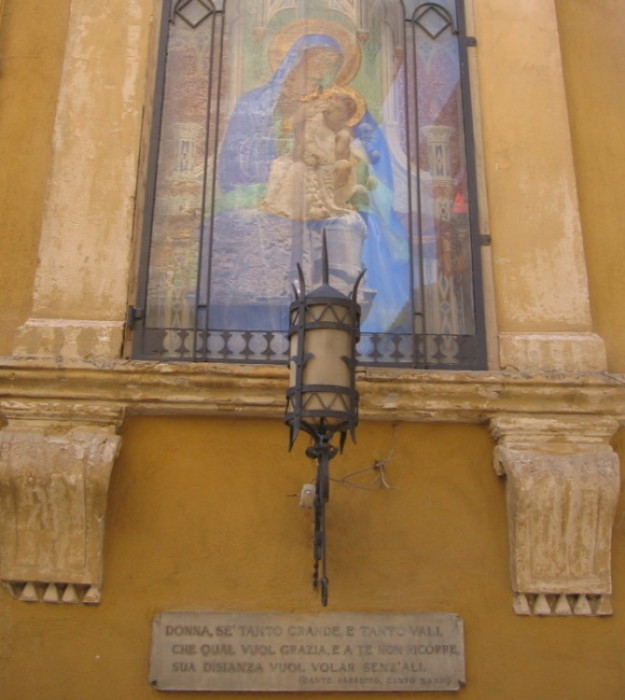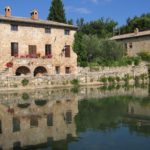The length of the Via Francigena
The Via Francigena is long! It starts in Canterbury England and goes to Rome Italy. In fact you can go beyond Rome, to the southern tip of the heel of Italy’s boot, and on to Jerusalem.
From Canterbury to Rome it is about 2,083 km (around 1,290 miles.) This will take about four months to walk.
The part in Italy is about 944 Km ( 587 miles.) It starts at the Gran San Bernardo Pass which connects the French Canton of Valais in Switzerland with the region of Valle d’Aosta in North West Italy.


Where to start your walk?
If you don’t want to tackle the whole Via Francigena, I recommend choosing the Italian section.
- The Italian section is decently sign-posted (and signage is improving yearly) whereas the signage in France and Switzerland is limited or nonexistent.
- Ending in Rome makes sense, it’s where you celebrate the culmination of your efforts and receive your testimonium.
If you want to start at the Pass, be forewarned that it is typically open only June through September. Be sure to check the weather. If there’s snow and risk of avalanche, you need to get a guide, or skip walking the pass and use the tunnel (which cuts off 3 days of walking.)
Choosing the amount of days
 How much time can you devote to this? If you want a simple walking holiday you might want to walk a section for only 5 days. If you want a more significant journey, that allows for a spiritual deepening, I recommend a month or more.
How much time can you devote to this? If you want a simple walking holiday you might want to walk a section for only 5 days. If you want a more significant journey, that allows for a spiritual deepening, I recommend a month or more.
Note that to qualify for a testimonium, a pilgrim must have walked 100 kilometers. (This would equal from the town of Viterbo to Rome.) And you must have a stamped pilgrim passport. (more on that below.)
Once you decide how many days you want to spend, try to count backward from Rome, based on understanding your level of fitness. Pilgrims who are very in shape often cover 25 kilometers a day. For me, because of doing it after an extreme illness, I found it challenging to walk 12 kilometers a day.
You may want some days off to rest and explore some of the towns. For example, I took two days of rest in both Lucca and Siena, and I spent one extra day in Bolsena.
What’s a pilgrim passport?
 It is your credential that certifies that you’re a true pilgrim. When you stay with religious institutions, your pilgrim passport will be stamped. If you’re staying at B&B or other “regular” accommodation, it won’t be stamped. However, if you pop into the local church and can find the priest, you will be able to get it stamped. You can obtain it at some tourist offices on the route, but that’s not the most reliable option. It is more secure to get it ahead of time. Get a list from the Confraternity of Pilgrims to Rome.
It is your credential that certifies that you’re a true pilgrim. When you stay with religious institutions, your pilgrim passport will be stamped. If you’re staying at B&B or other “regular” accommodation, it won’t be stamped. However, if you pop into the local church and can find the priest, you will be able to get it stamped. You can obtain it at some tourist offices on the route, but that’s not the most reliable option. It is more secure to get it ahead of time. Get a list from the Confraternity of Pilgrims to Rome.
Where to stay?
There is a combinationof accommodation, both religious and traditional. By traditional I mean hotels, hostels, B&Bs, and agriturisimi. The amount of religious accommodation options increases as you get closer to Rome. Be aware that the traditional accommodation is for everyone, not just pilgrims, which is why you may find them full, even if there are not yet massive amounts of walkers on this route. Make it a habit to call a day ahead for reserving accommodation if you don’t want to camp in a field. You can download accommodation lists here.
For information on packing see Part Two
To check out my memoir about my experience on the Via Francigena go here



Hello Chandi! I studied the Canterbury tales during my first year in my English Studies degree, so I know more about the history than the walkway. Actually, for some reason I didn’t even think about the pilgrimage as something you could do today! I’m so glad to read that you can, becasue this summer I did the St. James Walkway, that goes through Spain for the second time and it was wonderful.
Great post, though. It contains some useful data for those who has never done a pilgrimage before. I have a request, if you may, could you talk a little bit about its background and the meaning of the walkway in other article?
Thank you very much!
Ciao Alba,
Congratulations for completing the Camino in Spain twice! Sounds like you’re an accomplished long distance walker! Yes, I really enjoy talking about the history of the Via Francigena and I’ll get that into a post. Also, I was just interviewed on a podcast about this route and we got into some of the history of it. I will provide a link to that when it comes out in a few weeks.
That would be awesome! Did you do it alone, btw? I have read quite a bit about women in solo journeys and I think it is a great way to tell others “hey, you can do it too!” 🙂
I will keep an eye here for that podcast and further posts!
Hi,
Yes, I did it alone and saw only 8 other pilgrims the whole time.
Appreciate your sharing this amazing and challenging experience. I enjoy reading every word and am humbled by your dedication.
Aw shucks Melisa, that’s nice of you, but I know you walked the Camino so kudos to you!
women doing it solo are nothing unusual – even when I did the Camino del norte I met a couple of women who were totally solo’ing it and this was in the winter when even the beach near Donostia had snow.
If anything, soloing it is the norm on these journeys of self discovery
Since there are hundreds of thousands who do the Camino each year, it’s easy to find many who are doing it solo. Whereas I ran into 8 other pilgrims the whole time on the Via Francigena. None were single women. They were either single men or couples. The numbers are increasingly yearly on this route and of course women doing it on their own are part of the mix of pilgrims on the route.